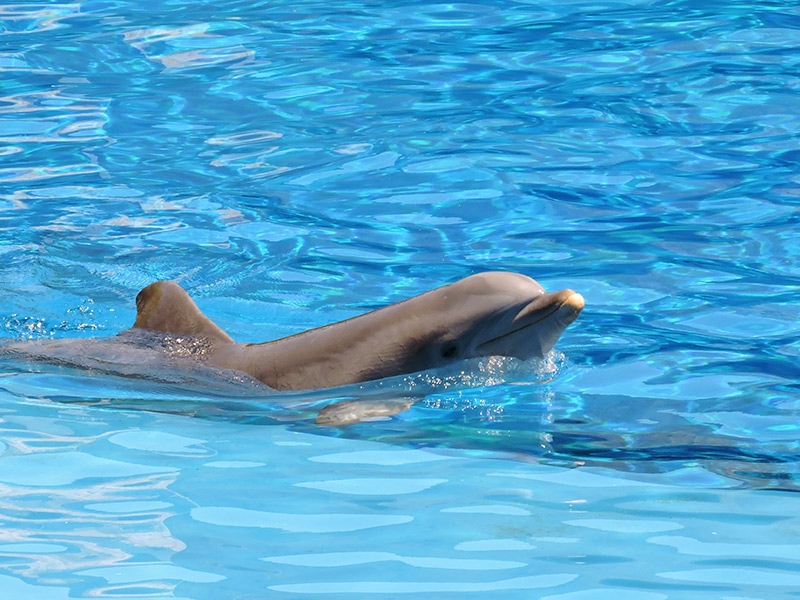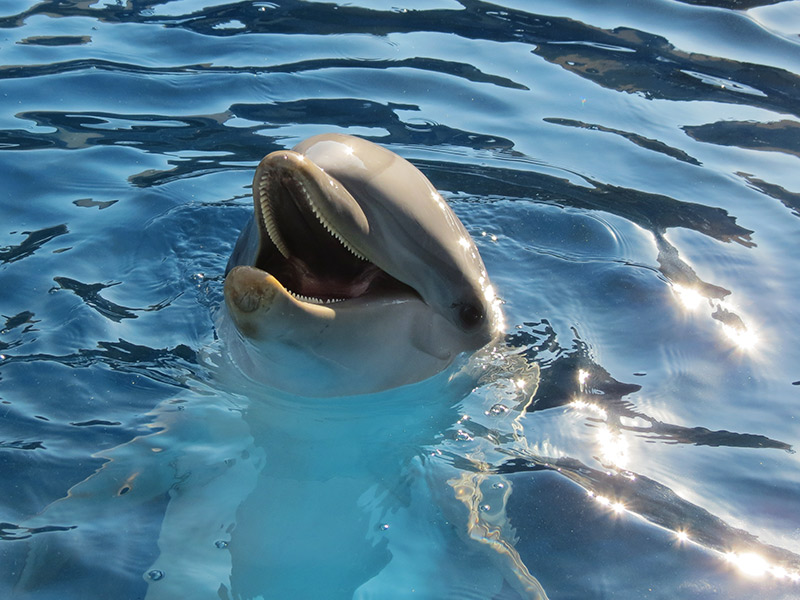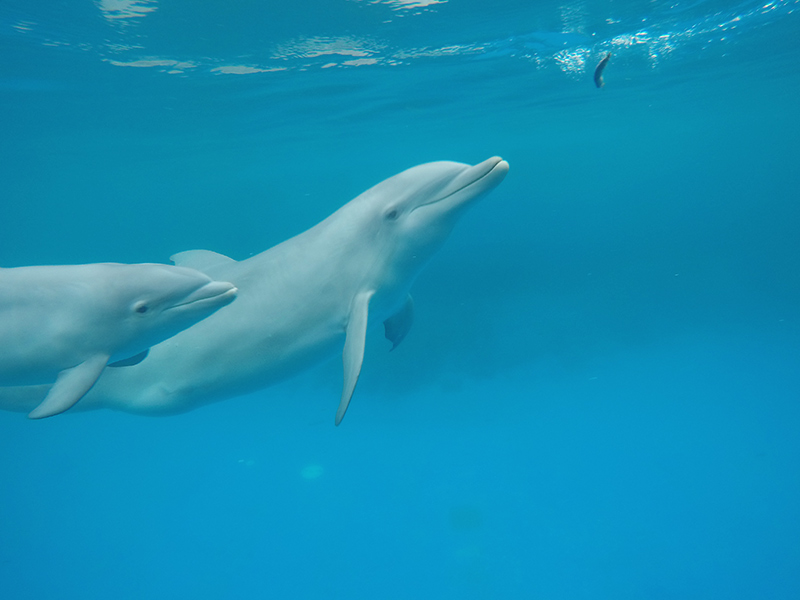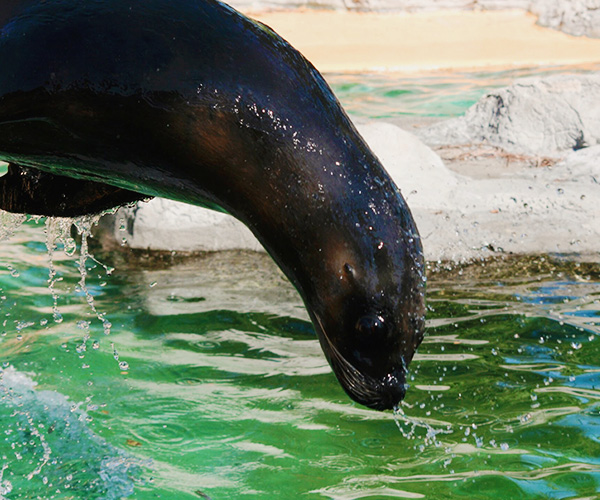The bottlenose dolphin is a species of mammal that belongs to the order of cetaceans, specifically to the group of odontocetes (cetaceans with teeth). Their ancestors evolved from a terrestrial mammal to an animal completely adapted to aquatic life. They inhabit all seas and oceans, as they are a cosmopolitan species.
Among their main characteristics is their soft and smooth skin, as well as the absence of hair. Although they are marine animals, they need to come to the surface to breathe, since they have lungs like us. They breathe through the spiracle, an orifice located at the top of the head. Through the spiracle they also make sounds that are used for communication or for their echolocation system.
To improve their perception of the environment in which they live, they have developed the echolocation system, a kind of biological sonar similar to that of certain boats, which allows them to monitor their environment in total darkness. Dolphins emit sounds that are focused and directed by a fatty organ in their head called the melon. These sounds, when they hit an object, bounce back and allow the dolphin to get a picture of its surroundings.
Dolphins are social animals, they usually travel in groups that vary in number depending on the species. The bottlenose dolphin, for example, creates groups ranging from 10 to 25 individuals (depending on whether they are in the coastal area or offshore). They communicate with each other through a large number of sounds, and are even known to have names (signature sounds). Body movements and jumps are also used for communication.
Regarding reproduction, gestation lasts approximately one year and they usually have only one calf per birth. The lactation period can last up to two years.
Piscivorous, they feed on shrimp, crabs, squid, octopus and a great variety of fish. They have between 84 and 100 teeth, which they use to capture their prey, but they do not chew the fish as they swallow it whole.



















